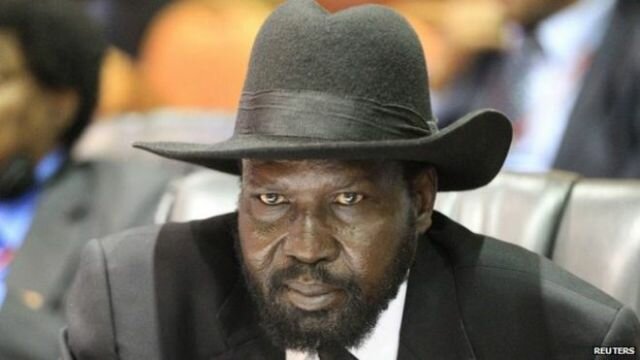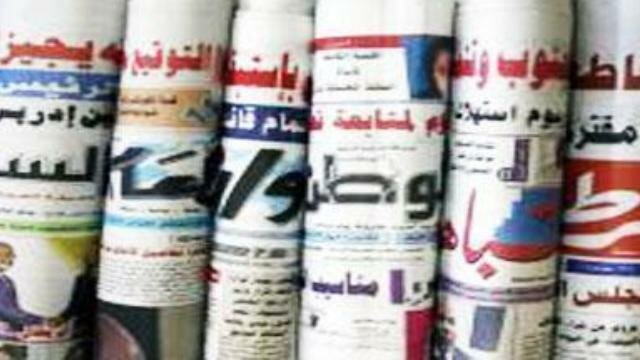
(Jack Lino Wuor Abeyi - Gurtong): The increasing incidents of targeting of innocent South Sudanese civilians on heavily travelled routes
as well as in their villages by armed groups is a worrisome development. It questions whether what began as political strife over leadership and demands for political reforms is metamorphosing into ethnic hatred against specific ethnic groups to a level that justifies indiscriminate, yet targeted attacks on them. The risks of revenge attacks raise even more fear and pushes the country into the precipice.
These developments demand honest discussions between all members and levels of society as to avert further heightening of minds along ethnic lines.
Without the need to elaborate on the developments which led to the December 15, 2013 crisis, the signing of the Agreement on the Resolution of the Conflict in South Sudan (ARCSS) in 2015 and the return of former FVP Dr. Riek Machar to Juba on April 26th 2016 had raised hope among conflict-weary citizens that the war would finally come to an end; its genie returned back into its political bottle.
However, the peace agreement suffered a blow in early July 2016 when former FVP Riek Machar and his SPLA - IO soldiers had to escape from Juba once again after battling government forces inside the city. The security arrangement articles of the peace agreement faltered. In an effort to stabilize the rapidly deteriorating situation, Gen. Taban Deng Gai was quickly appointed as the country’s First Vice President. He was described as amenable as well as having a good working relationship with President Kiir but renewed hostilities between SPLA –IO and SPLA raised questions as to whether or not Gai truly commands loyal troops on the ground.
We must all now seek an honest answer to this important question; why has the ARCSS suffered setbacks when a similar - power sharing agreement - the Comprehensive Peace Agreement (CPA) held beautifully from the time Dr. John Garang returned to Khartoum in 2005? The CPA ended 22 years of the civil war between South Sudanese and successive regimes in Khartoum. Both the CPA and the ARCSS were mediated by the same political body; the Intergovernmental Authority on Development (IGAD). Although Dr. Garang returned to Khartoum with less troops, compared to former FVP Riek Machar numbers in 2016, he was received by a sea of jubilant Sudanese citizens from various ethnic, cultural and religious background.
There are several possible reasons to explain why the implementation of the ARCSS proved challenging and why negotiations may be needed to resuscitate it. These reasons stand in sharp contrast to the successful implementation of the CPA.
First, the CPA came as a result of direct and honest negotiations between the warring parties; they owned it. It also contained best possible outcomes for the people of South Sudan and other marginalized areas of Sudan. The ARCSS, however, was a last minute deal imposed on the warring sides. It wasn’t the agreement they wanted; it was rigid, highly ambitious and demanding. And yet, IGAD’s mediators failed to add therein enough reinforcement mechanisms to absorb and handle expected setbacks along the way.
Second, although IGAD’s mediators understood the December 15, 2013 crisis was a symptom of much deeper social and political problems and unresolved legacies of the liberation war, they marketed their peace efforts as the only key to solving the country’s fundamental problems, and at the expense of the Agreement on the Reunification of the Sudan People's Liberation Movement (Arusha Agreement).
Third, the general mindset across Sudan in the last years and months leading to the signing of the CPA in 2005, was one of peace and a genuine desire to end Africa’s longest civil war. The current civil war however, continued to wage on throughout the negotiation period of the ARCSS. IGAD’s insistent call for unnecessarily long recesses wasted precious time. The result was a peace agreement whose Permanent Ceasefire and Transitional Security Arrangements (PCTSA) was unenforceable because of constant shifting of war zones on the ground. Disagreements on cantonment cites was inevitable and with it the likelihood of the July 3 –10, 2016 incidents.
The fourth point is an unintended consequence of the peace agreement, and a testament to its short comings. The enormous regional and international effort devoted to secure the peace deal was seen by many as a hard earned reward for ethnic Nuer, and therefore a success to emulate. Many tribes now believe that picking up arms against the government is a small price to pay in their quest to secure representation in the national government and a share in the nation’s wealth.
Fifth, the fact that most of the army’s new recruits hail from Dinka heartland raised suspicion that the SPLA was quickly becoming a military wing of one ethnic group. As rebellions spread to new places; in Bahr el Ghazal and the Equatoria regions, allegations of the army’s mishandling of civilians continued to surface. The army’s contact with non-Dinka communities effects conflict dynamics negatively and shows that there is no military solution to the conflict.
Sixth, President Kiir’s creation of 28 new states in place of the 10 existing states in October 2015 raised more fear in some corners that Juba was encroaching on their ancestral land. Any slight tampering with state boundaries was enough to raise fears of dispossession given the ambiguity of the county’s customary Land Act of 2009 and land tenure system under the country’s Transitional Constitution. The growing rebellions of some ethnic Bantu (Fertit) groups in many parts of Western Bahr el Ghazal State are examples of localized grievances turned national.
Much of the countryside is either impenetrable swaths of empty land or fiefdoms to growing numbers of self-appointed tribal generals with a propensity to shift allegiance at will. These ethnic enclaves provide safe havens to local militias and so any direct military action by the government is interpreted as an assault on one particular ethnic group. The case of Aguelek militia in areas west of Malakal in Upper Nile State is a good example. This shows that no amount of military action can solve ethnic grievances.
Seventh, the international community failed to finance the Transitional Government of National Unity (TGoNU) from the start. It wanted to see the peace agreement giving results on the groups before offering any financial support. President Kiir and his allies in the government felt betrayed and shared suspicion that the international community wanted to see the peace agreement reach certain outcomes. The unity government is essentially a big tent policy and so was very expensive to operate.
Lack of funds is now contributing towards the faltering of separate peace agreements between the government and the Cobra Faction of the South Sudan Democratic Movement/Army (SSDM/A). The Murle militia complained of not being reintegrated into the army and receiving salaries.
We can extract two key points from this analysis. First, although the army has a constitutional duty to quell every rebellion in the country, no amount of military effort can pacify the countryside without fueling more ethnic tensions and risking a dangerous slide into total chaos. At the roots of these ethnic grievances are issues of justice, equality and development. These insurgences breed in impoverished communities where illiteracy and joblessness leaves thousands of adult males vulnerable for military recruitment by local militias.
Second, ethnic hatred is alien to the South Sudanese culture. These localized rebellions, pockets of insecurity and ethnic rigidity are essentially manifestations of long periods of marginalization, injustice, dispossession and misguided expectations and hopes for a better future. The people yearn for true representation, concrete development plans and a unifying figure who will bring the best out of them
-
Alternative Learning Programme in OmbaddaNext >

